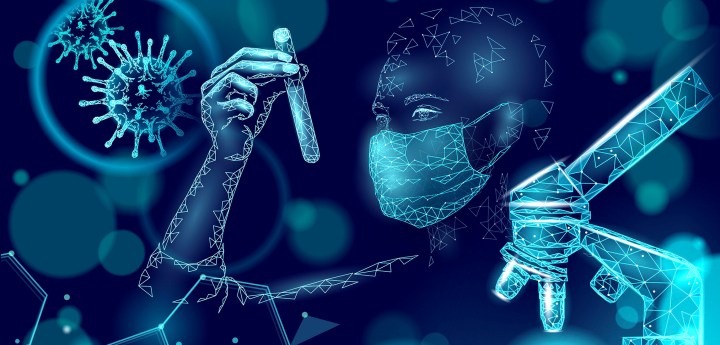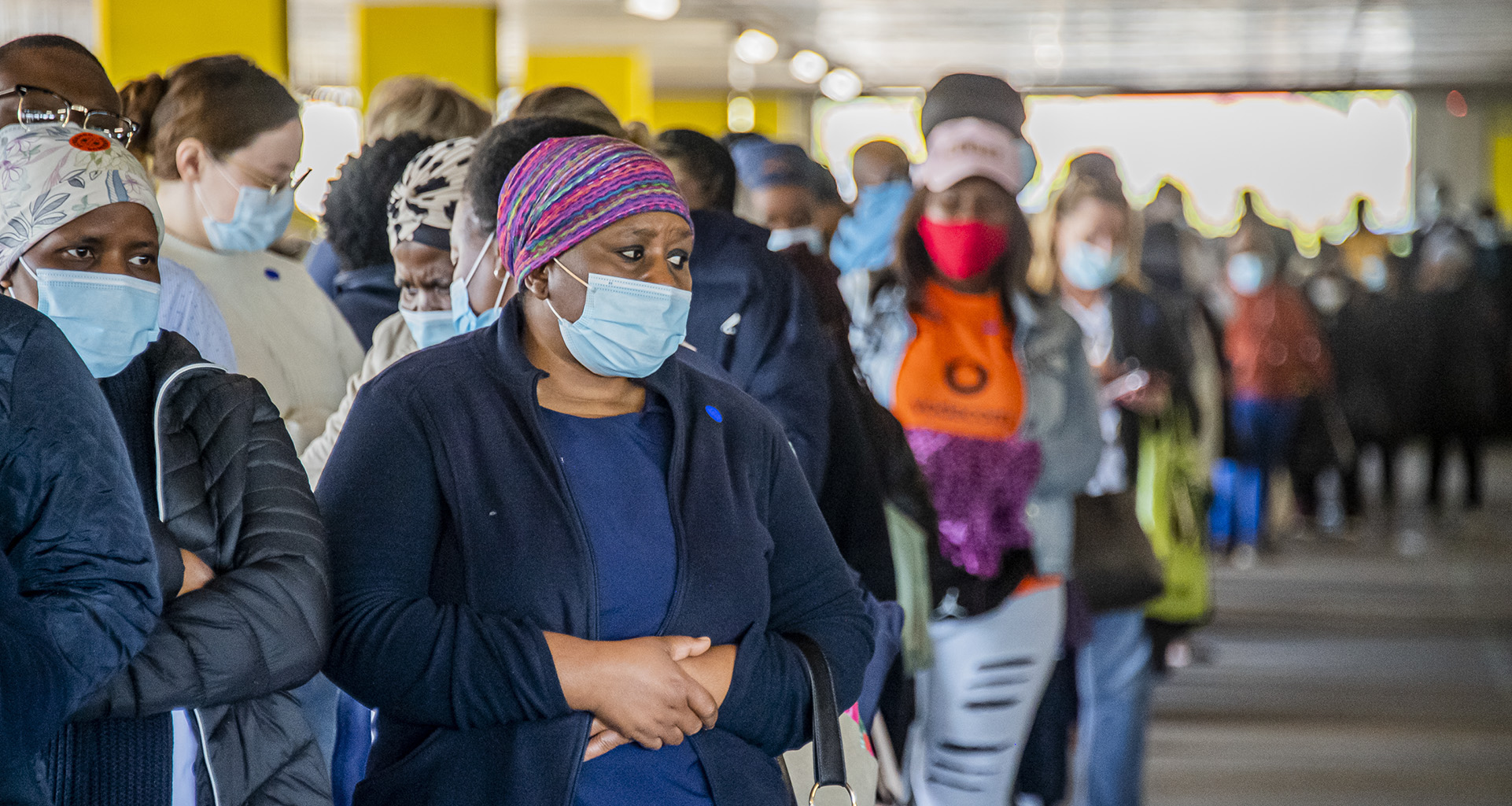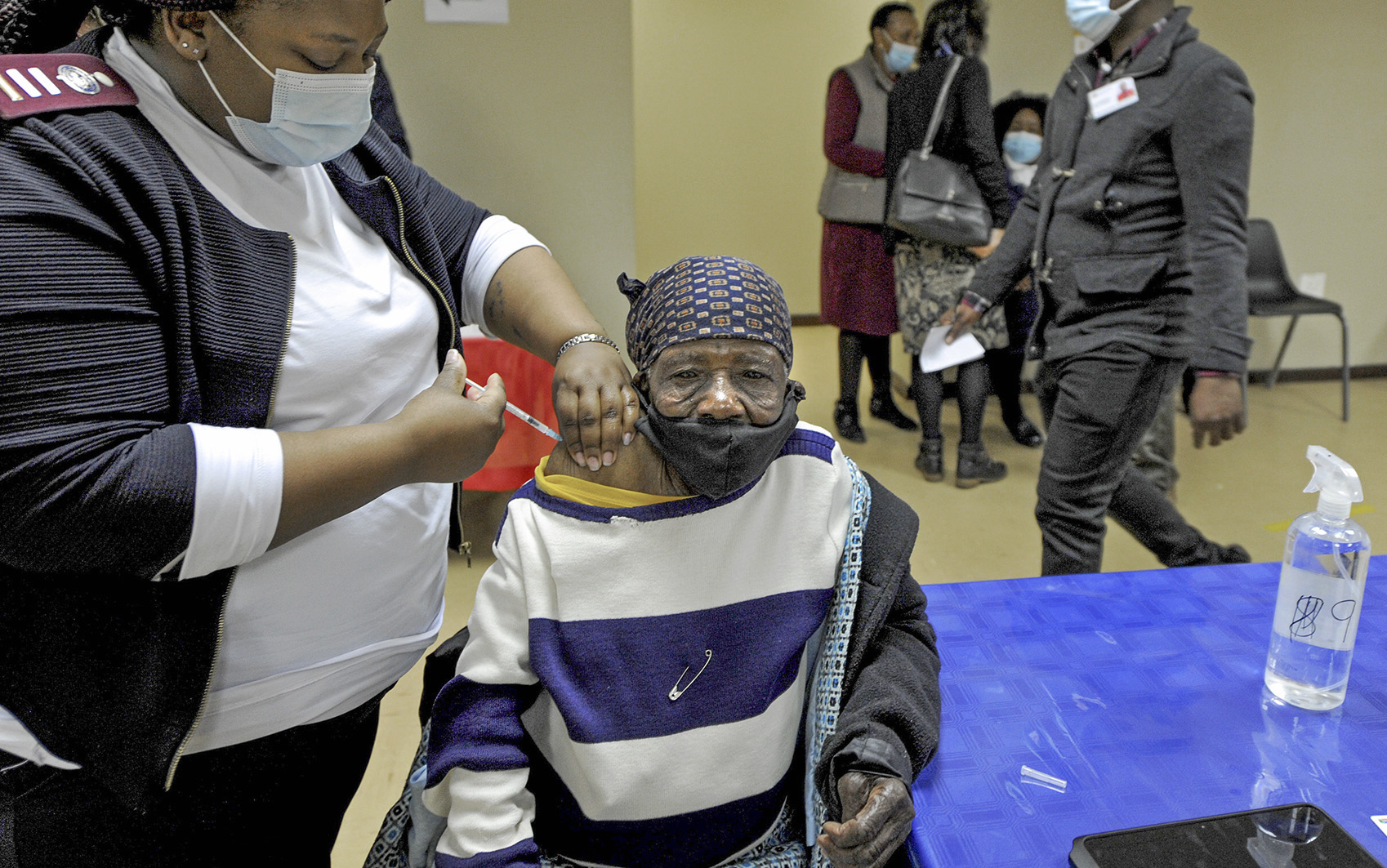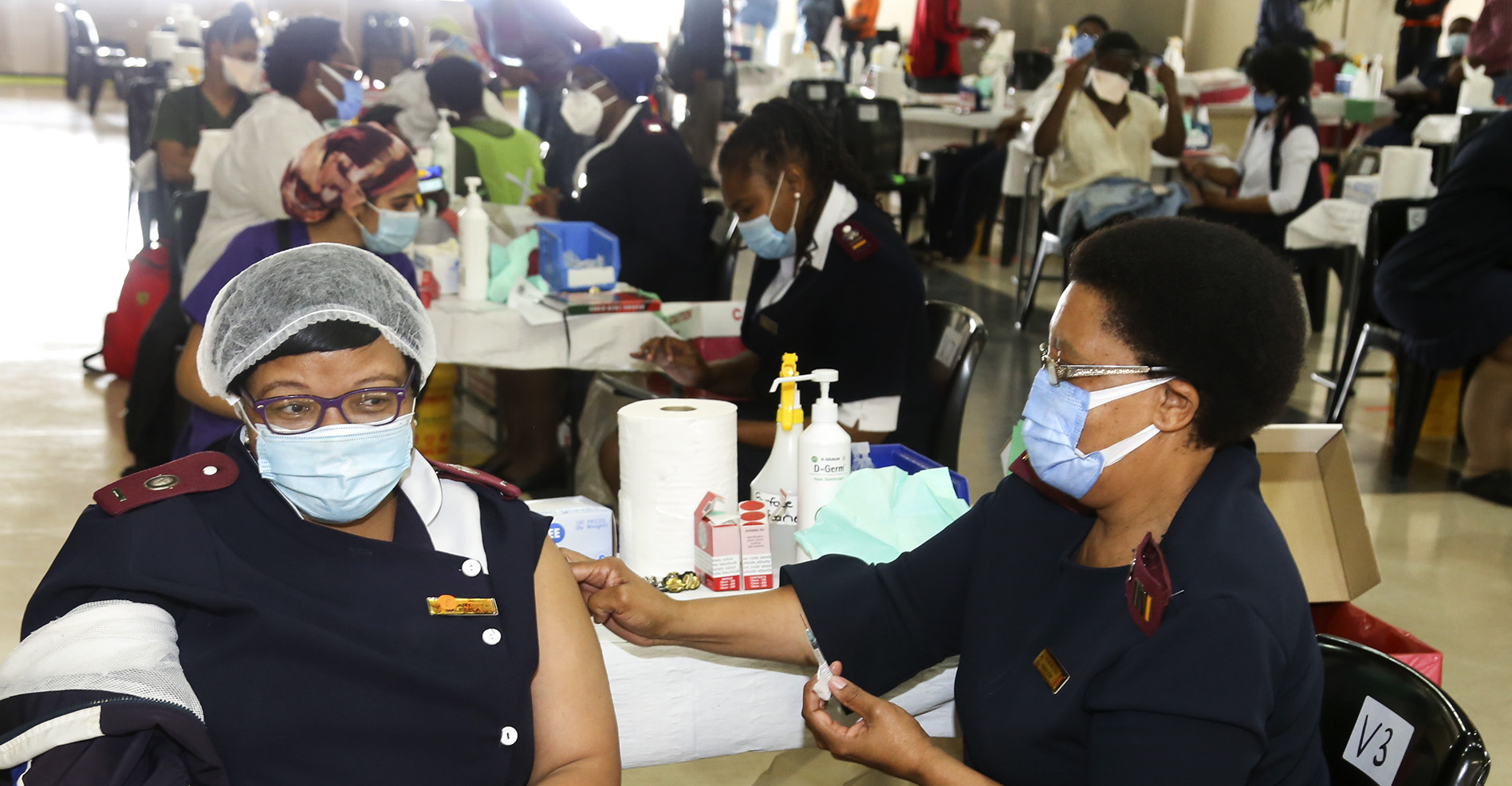OP-ED
The Sisonke trial rewrote history: Eight lessons for the nationwide vaccine roll-out

Usually, the gap between designing a study and scaling it up to reach people on the ground takes years. Sisonke did it in a matter of 17 days — and rewrote history.
Linda-Gail Bekker and Glenda Gray are the lead co-investigators of the South Africa’s Phase three B Sisonke study. Bekker is the director of the Desmond Tutu HIV Centre and the chief operating officer of the Desmond Tutu Health Foundation at the University of Cape Town. Gray is the president of the South African Medical Research Council (SAMRC).
The rest of the authors were all part of the core Sisonke research team:
Ameena Goga is the director of the SAMRC’s HIV Prevention Research Unit. Nigel Garrett is the head of vaccine and HIV pathogenesis research at the Centre for the Aids Programme of Research in South Africa, Lara Fairall is the director of the Knowledge Translation Unit at the University of Cape Town, Ian Sanne is the managing director of Right to Care, Fatima Mayat is the director of research operations at the Perinatal HIV Research Unit at Chris Hani Baragwanath Hospital, Jacquee Odhiambo and Simba Tavuka are project managers at the Hutchinson Centre Research Institute of South Africa.
South Africa’s 14-week Sisonke study forced research teams — 30 of them — to move from conceptualisation to implementation within 17 days.
The programme, a collaboration between the Health Department, the South African Medical Research Council, the Desmond Tutu Health Foundation, the Centre for the Aids Programme of Research in South Africa, Janssen and Johnson & Johnson (J&J), used J&J’s one-shot vaccine to immunise 479,768 healthcare workers between mid-February and mid-May.
Health workers are at a greatly increased risk of contracting SARS-CoV-2, the virus that causes Covid-19, compared with the general population. Most countries, therefore, target them first for vaccination, so that they can in turn care for hospital patients and vaccinate people.
Within two-and-a-half weeks, Sisonke researchers had to learn the results of the Ensemble trial (the study that tested the efficacy of the J&J vaccine), develop a study protocol, obtain regulatory and ethics approval, get jabs into the country and ensure their delivery to vaccination sites so that we could administer the first shot on 17 February.
The gap between conceptualisation and implementation is usually considerably longer, with years lagging between establishing the benefits of an intervention and scaling it up to the people who need it. To have achieved that in this short period was to rewrite history. For many of us who were veterans of the HIV pandemic and had lived that long struggle, it was a moment of hope and redemption — an example of what was possible when political will, science, hard work and a strong desire to act come together.
Once we had started with immunisations, we moved from a handful of vaccinations at 18 urban sites to providing more than 200,000 doses from more than 50 sites across the country. By the time we completed the Sisonke study, we had worked out of 122 sites in nine provinces, including providing 24,400 vaccines in remote parts of the Eastern Cape and 3,800 in the Northern Cape.
We learnt valuable lessons — from the step-by-step detail required to draw up every precious drop of vaccine from a vial to ensure that every dose delivered was the right volume, to how to reduce waiting times at sites — which could be useful to Phase 1B (health workers not covered by Sisonke) and Phase 2 (starting with people of 60 and older) of the country’s vaccine roll-out.

Health workers wait in long lines at Netcare Milpark Hospital vaccination site in Johannesburg on May 14, 2021. (Photo: Gallo Images / Rapport / Deon Raath)
Don’t be rigid, teamwork makes the dream work
Nothing was off limits for our researchers, who engaged with Health Department teams, carried fridges, oversaw meticulous preparation of doses and consent processes and managed side-effects and reporting.
Such flexibility will certainly be key to realising the country’s goal to vaccinate 40 million people in 2021.
Sisonke’s mandate was to reach as many of the healthcare workforce as we could in the time allotted and with the research-allocated vaccines imported for this purpose — in total 500,000 shots of J&J’s single-dose vaccine.
We showed that by working closely with Health Department colleagues at national, provincial, district and facility level, this was possible and that we could reach all cadres of healthcare workers, including nurses, doctors, allied health professionals, community health workers, traditional health practitioners and all health sector support staff.
Did we make a mountain out of a molehill? Vaccine hesitancy largely disappears when vaccination starts
We established quickly that vaccine hesitancy, much profiled in the media, was not the mountain it seemed. If anything, the reverse was true.
Instead, health workers, with their first-hand experience of the suffering this virus can cause, were eager and in some cases desperate to get vaccinated, choosing not to disclose past histories of severe allergic reactions to vaccines.
The message that there is no clinical reason to miss out on vaccination will be vital for the national roll-out. In our study, using senior health workers who had been vaccinated to provide reassurance to the few who were hesitant, worked very well — everyone who has been vaccinated is a potential vaccine ambassador for a roll-out.
Some precautions may need to be taken in certain groups, such as those with a history of severe allergic reactions, but these can be managed. Severe allergic reactions are profoundly rare and can be managed; severe Covid-19 is not.
Stick to appointments to prevent sites from becoming transmission hotspots
Vaccine enthusiasm does require careful scheduling and queue marshalling to ensure physical distancing and mask-wearing. This is crucial, as vaccine centres with large crowds can easily become superspreader events as we move into a third wave.
An efficient booking system is an important tool to help create order at sites and prevent vaccinees from infecting one another with SARS-CoV-2. Bookings also shorten the waiting times at sites.
The EVDS worked for us as a booking system, but there have been glitches with the larger roll-out this week — it is important that those snags are addressed.

An elderly man receives a Covid-19 vaccine jab at Munsieville Care for the Aged in Mogale City on 17 May 2021, the date of the launch of phase 2 of the national vaccination roll-out. (Photo: Gallo Images / City Press / Tebogo Letsie)
Be honest about side-effects
Timely, transparent and honest reporting of serious side-effects is crucial, so that these can be reviewed by independent scientists to establish whether there is any link with the vaccines.
Usual vaccine side-effects proved very common and education and communication about what to expect and how to manage them was vital. All too often these risks are communicated separately, generating fear and confusion.
Communicating risks became more complex when the rare blood-clotting condition was first reported — headaches in the first three days could be managed with reassurance, but needed to be taken more seriously if severe with an onset between four and 20 days after vaccination or associated with blurred vision, weakness or difficulty speaking.
It is, however, important to communicate the risk of these events alongside the risks of Covid-19 so that people can make informed choices about choosing to take up the offer of vaccination. Equipping vaccinees with factually correct advice can go a long way to managing expectations and ensuring the few people who do experience serious side-effects are quickly detected and managed with care.
Safety data will be crucial as South Africa chooses future vaccines
In Sisonke we established an effective safety monitoring system based on both active (when vaccinators follow up directly with vaccinees) and passive safety (when vaccinees are asked to report side-effects to vaccinators) reporting. Our call centre operated 24/7 and was able to attend to thousands of administrative and provider queries and follow-up people with side-effects until all symptoms had resolved.
This is now being repurposed to support the national vaccination programme and to monitor any breakthrough infections (when vaccinated people get infected with SARS-CoV-2) in health workers who received the Sisonke J&J vaccine.
Our breakthrough infection network brings together teams from the National Institute for Communicable Diseases, the National Health Laboratory Service, research sites, as well as academic and private laboratories, to ensure we get a full picture of outcomes, including clinical course and viral genetic information.
Use of national identity numbers enabled us to link to hospital surveillance systems and the death register to enhance the rigour of our evaluation. Establishing the effectiveness of the J&J jab as the third wave progresses will inform the selection of appropriate vaccines for South Africa and help to answer outstanding questions about durability of protection and when, if necessary, booster doses may be needed.
Tech-savvy people are key to help the elderly register for a jab on the EVDS
Critically, Sisonke enabled the Health Department to test the implementation of the EVDS. Many invaluable lessons were learnt, including how to gate-keep and open certain sectors and groups in terms of managing numbers and expectations. But more challenges have emerged with the system that are now being addressed.
We learnt that registration assistance should be offered to ensure the digital divide doesn’t exclude people. Health workers who helped their colleagues to register provides an important precedent for the next few months; we must reach out to others, especially our older people who may have less access or skills in the online space. An electronic system for documenting vaccination is essential to the equality and effectiveness of this national campaign.

Frontline workers getting jabs during the launch on 2 March 2021 of the Sisonke Vaccine Programme at Charlotte Maxeke Academic Hospital in Johannesburg. (Photo: Gallo Images / Luba Lesolle)
Clear ‘how to’ guides help vaccinators on the ground
Often, the devil was in the details.
Covid vaccines are provided as small-volume injections, in the case of Sisonke as two doses of J&J vaccine per vial. Ensuring that volume is correctly drawn up requires intensive engagement with minutiae. We developed detailed resources on how to draw up each of the two doses, trained, retrained, provided quality assurance and a three-step volume verification process to ensure that every dose counted.
Allocating this process to dedicated teams of research staff, a requirement of the research identity of Sisonke and of the South African Health Products Regulatory Authority, ultimately proved useful for optimising efficiency at sites and should be considered as we ramp up mass vaccination.
In addition, there is cold-chain management that needs careful monitoring and accountability.
South African nurses have been drawing up and dispensing vaccines for decades, but never have we had a vaccine campaign of this scale and complexity before. The J&J and Pfizer vaccines have varying storage requirements; Pfizer must be reconstituted by injecting saline into the vial, neither can be shaken, and needles cannot be changed between drawing up a dose and injecting it, or micro-drops sitting in the needle mean its nib will be wasted.
Work those WhatsApp groups when things have to change quickly
Getting factual and useful information is key — not only to enhance efficiencies at the vaccine centres, but also to allay concerns. We used a wide range of tools and channels, from job aids, checklists, press statements and posters, to media interviews to keep vaccination staff, health workers and the public up to speed.
Many of these were distributed through WhatsApp groups — establishing the right groups and providing a steady stream of trustworthy content was at the heart of our communication approach.
Communication within the team was critical, too, for the agility needed in the programme. The use of internal WhatsApp group messaging and almost daily calls enabled us to rapidly implement changes on the ground, redistribute vaccine doses to increase access and support each other through long days and weeks. DM/MC
This story was produced by the Bhekisisa Centre for Health Journalism. Sign up for the newsletter.
"Information pertaining to Covid-19, vaccines, how to control the spread of the virus and potential treatments is ever-changing. Under the South African Disaster Management Act Regulation 11(5)(c) it is prohibited to publish information through any medium with the intention to deceive people on government measures to address COVID-19. We are therefore disabling the comment section on this article in order to protect both the commenting member and ourselves from potential liability. Should you have additional information that you think we should know, please email [email protected]"






 Become an Insider
Become an Insider